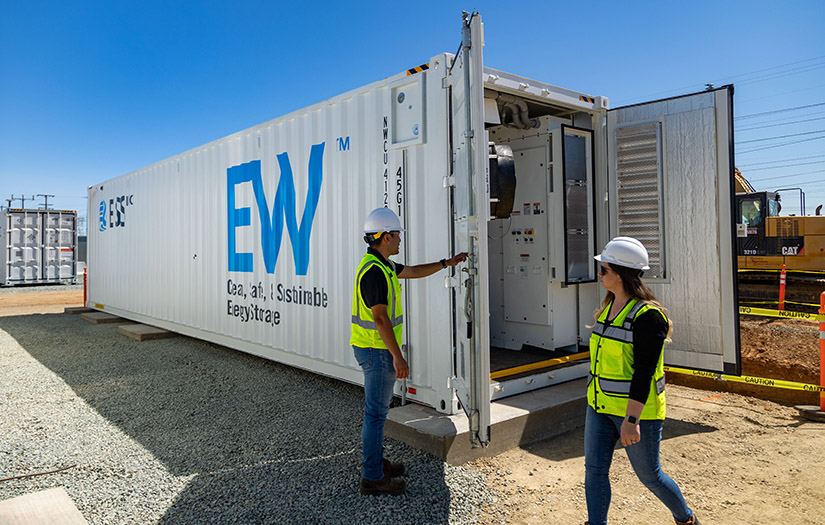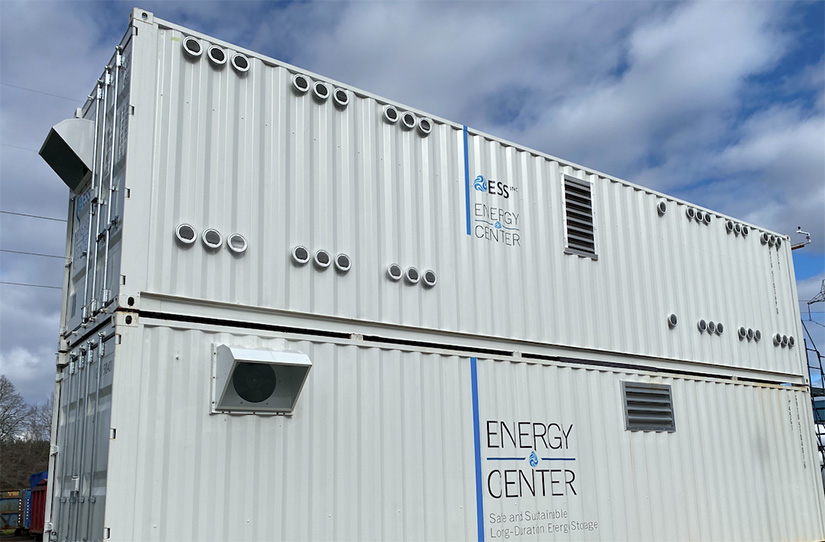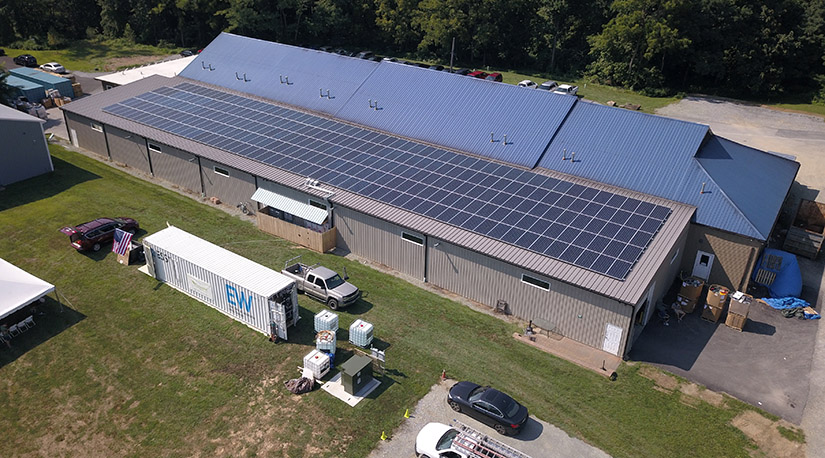IN² at 10 Years: Cohort 1 Flow-Battery Creator Has the Power
In 2024, the Wells Fargo Innovation Incubator (IN2) celebrates its 10th anniversary under the management of the National Renewable Energy Laboratory’s (NREL’s) Innovation and Entrepreneurship Center. As part of the 10-year celebration, NREL is looking back at IN2’s inaugural cohort to see how the companies have progressed over the last decade.
NREL Senior Building Energy Researcher Shanti Pless looks at the startups he works with as part of the IN2 program as his children.
“You’re nurturing them and supporting their aspirations,” he said. “And celebrating their success when they graduate.”
Pless was part of IN2 from the very beginning, helping to choose the participants for the first cohort 10 years ago. For one of the companies, ESS Inc., Pless suggested the company apply and championed it through the process.
“I believed in ESS because of the simplicity of the company’s flow batteries,” Pless said. “The battery business in general is hard, and back in 2014 there were many different flow batteries in the market. But ESS really leaned into the simplicity of it all, and while others have come and gone, ESS is one of the only ones left.”

The ESS long-duration batteries are not small—they fit inside a storage container for utility and industrial stationary storage applications. This includes microgrids, university campuses, or municipalities. These entities require energy available around the clock, making long-duration storage technology like ESS's critical.
“Our battery is water-based,” ESS Senior Vice President Hugh McDermott said. “We have an electrolyte composed of iron and saltwater. During charging, the iron creates a thin layer of film on the carbon plate, and the solution is clear when it’s fully charged. When we want to discharge the battery, we just reverse the polarity. We solved how to make that process without any degradation in battery performance.”
The only minerals in the battery are iron and salt, meaning it does not need precious metals like other types of batteries and is essentially harmless to the environment.
“Pumping rusty water is an easy thing to do,” Pless said. “If it leaks, you put in more salt and more water. You don’t have to worry about chemicals that are poisonous or environmentally dangerous. That goes a long way.”

The ESS batteries do not have a risk of fire danger, so they can stack on top of each other for a better use of space. Photo from ESS Inc.
ESS’s flow battery also has no risk of catching fire, and it can go through thousands of cycles. McDermott said ESS tested it through the support of the U.S. Department of Energy and the Advanced Research Projects Agency-Energy (ARPA-E).
Since helping curate the first cohort, Pless continues in that role to this day. In the past decade, he has helped at least 10 other IN2 companies figure out their projects.
“For the IN2 companies, it’s pretty simple to understand what success looks like,” Pless said. “If your partner is successful, they raise a bunch of money or they get purchased. They grow into their ultimate destiny of what they’re trying to do, and to be able to support that is amazing.”
ESS continues to see success. Like many communities across the United States, Sacramento, California, set a decarbonization goal to achieve by 2030. To do that, the city needs at least 1.2 gigawatts of power from clean energy sources. ESS has signed up to deliver 2 gigawatt-hours of storage to mitigate any intermittency in that power before the end of the decade in Sacramento.

ESS is also the only IN2 company to date to go public, being traded on the New York Stock Exchange with an IPO in 2021 worth around $1.1 billion.
“We raised a lot of money by going public, and the majority is going to scaling up our business,” McDermott said.
In addition to Sacramento, the company is also working with Tampa, Florida, and Portland, Oregon, among others. It also continues to work with NREL on modeling for overseas markets such as Bulgaria and Morocco.
“We’re immensely proud of having gotten to where we are and are very thankful for our supporters on the way,” McDermott said. “At the time of the first IN2 cohort, every penny mattered for us. Every bit that we got in gave us more time and gave us another extension of time to get this product to market. Without that support, we just wouldn’t be the success we are today.”
Learn more about the IN2 program.
IN2 at 10 Years Series:
Last Updated May 28, 2025
